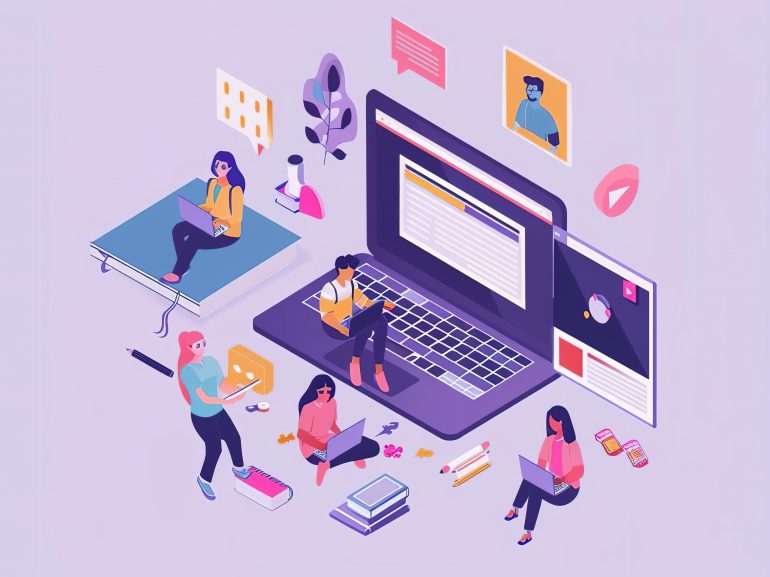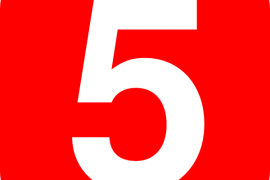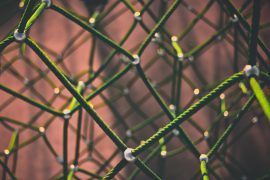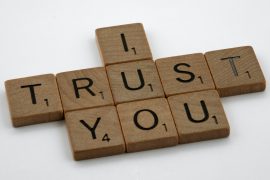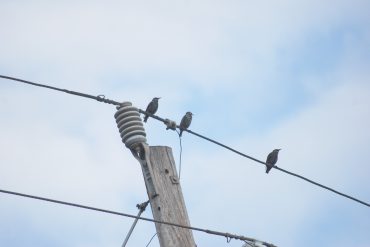Universal Design for Learning (UDL) is a framework that can be used to guide the design of accessible and challenging learning environments for all students. In principle, UDL proposes change in teaching and learning environments rather than learners to enhance diversity and inclusion. Our 2032 strategy contains a commitment to embracing equity, diversity and inclusion across the institution – utilising the UDL framework is a way to work towards this goal in our teaching and learning practices.
On the first Wednesday of each month the Educational Innovation team runs an informal ‘UDL Chat‘. In these lunchtime sessions colleagues from across the institution, both professional and academic, are invited to share about their work and projects utilising UDL, and as a group we discuss and share knowledge. In this year’s first UDL Chat attendees shared their UDL-related projects and goals, and were asked to put forward any questions they had about working with the framework. We decided to put the questions that emerged from this session to UDL expert Dr. Elizabeth Berquist. Elizabeth is co-author of the book “Your UDL Journey“, and has been working with the Educational Innovation team over the past 12 months to develop UDL resources specifically for us at Sydney. The interview below has been edited for length and clarity.
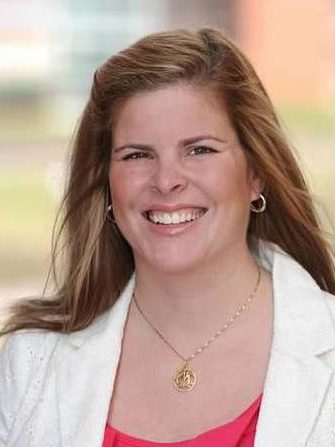
Dr. Samantha Poulos: Broadly in our UDL chat sessions there is a sense that our colleagues have a desire to improve their UDL literacy. How would you advise people boost their familiarity with the UDL checkpoints?
Dr. Elizabeth Berquist: The easiest way to is dive into the CAST website and use the live linked version of the guidelines. Using the guidelines in context is the most important way to build UDL literacy. Once you learn it, you can’t unsee it! You will start finding examples of UDL everywhere – from grocery stores to the cinema, to your gym. I also think it is helpful to think about applying the UDL checkpoints to your learning environment as a whole, rather than to a specific lesson, project, or assessment.
The traditional definition of a learning environment may bring to mind the physical environment; space considerations, room layout, furniture or tools. These design aspects are important components of developing a flexible learning environment, but a sole focus on them is not enough to meet the needs of today’s learners, or to support educators working to design equitable, inclusive leaning environments.
This is where the UDL guidelines, a strong understanding of equitable practice, and a healthy dose of self-reflection are needed to help us work toward the goal of developing truly inclusive learning environments.
The UDL guidelines and checkpoints help us to predict barriers that occur regularly in the learning environment. Then, they provide us with ideas for providing access, building understanding through scaffolds and providing opportunities to internalise learning. If you can predict it, you can plan for it!
Samantha: One member of the UDL Chat conversation raised this idea: “I want to try and de-jargon my language, to try and communicate and connect more clearly with everyone. I think the way we mindfully communicate our ideas and learnings with people is the foundation of accessibility.” Is there a way to de-jargon the way we talk about UDL?
Elizabeth: I think we have to distinguish between jargon and what is really precise, discipline-specific language. Some of the terms that we use when talking about UDL can seem like jargon at first, but they are actually super important to understanding new ways of thinking about teaching and learning. Take ‘executive functioning skills‘ as an example – on the surface that term sounds jargon-y but in reality, those are skills that I would argue that all educators need to know and that very few of us were trained to support.
Loui Lord Nelson‘s podcast UDL in 15 minutes is a great resource here. She is an excellent communicator and speaks masterfully about UDL without using a ton of jargon.
Samantha: Members of our chat asked for advice on how to talk about UDL to their colleagues, what would you say to them?
Elizabeth: If they are thinking about colleagues who might be unsure about UDL, my go-to is always to start by asking questions. Find out what problems they are having, and ask questions about what they have done to remove the barriers that exist to students achieving in the learning environment. Questioning is a great way to get people thinking about their practice without actually telling them what to do.
Samantha: In UDL Chat one member said, “It’s about being generous with your time, with your knowledge” – can you speak on this idea of generosity and sharing in relation to UDL?
Elizabeth: Yes, yes, yes! I think about people that I know in the UDL field. They are all generous with their time and their work product. At its core, UDL is about disrupting inequities and so this work requires that we are in community with one another as we work towards new ways of thinking about teaching and learning.
We have to share, we have to collaborate, we have to be accountable to one another.
Find out what is working for someone else—and if they are doing something better than you, if their students are performing better, find out why! Don’t be afraid to be vulnerable. Similarly, if you have something that is working, don’t keep it to yourself. Find other like-minded educators and share.
Samantha: Lastly, implementing UDL is a long-term project, do you have any advice for people embarking on and remaining positive over a long-term progressive project?
Elizabeth: You will never be finished! UDL implementation is an iterative process. It is about continually refining and reflecting your craft, and I feel that UDL is a transformative process. As Patti Ralabate and I explained in Your UDL Journey, there is a substantive difference between changing one’s own practice (i.e., fixing what you already know and do) and seeking a transformation in instruction (i.e., creating a different future) across classrooms, departments, schools, or districts. Large-scale change or transformation has to be a long-term, sustainable process that goes beyond short-term fixes. True transformation impacts the system. It was not until I began applying the UDL framework to learning environment design that I really began to see how the framework could be used to transform instruction beyond my individual classroom.
The goal of UDL is to support learners to become ‘expert learners’ who are purposeful and motivated, resourceful and knowledgeable, and strategic and goal driven. At the foundational level, UDL is about changing the design of an environment rather than changing the individual learner.
Top tips to develop your UDL literacy
- Try using the UDL guidelines in your teaching and learning context and your everyday life.
- Ask questions, be vulnerable, and share your wins!
- Join the UDL community we’re building at Sydney, and work with our expert team by requesting an Educational Design Accelerator project.
- Come along to UDL chat at lunchtime on the first Wednesday of each month. Past recordings and links to other future events are available on the Designing for Diversity Canvas site.
- Check out other UDL stories from Teaching@Sydney.

